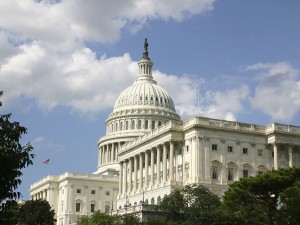Over the last two weeks, lawmakers have continued to make important decisions regarding their respective chambers. Elsewhere, U.S. Secretary of Education Miguel Cardona delivered a major speech outlining his plans for the department in the coming year, while a slate of Presidential Scholars has been released.
 118th Congress Continues to Take Shape
118th Congress Continues to Take Shape
Earlier this week, both the House and the Senate reconvened after recessing for the recent Martin Luther King, Jr. holiday. Lawmakers in the House continued to make important decisions related to committee assignments this week, which will have lasting impacts on Career Technical Education (CTE) funding and policymaking for at least the next two years. Of particular note, House Republicans announced that Rep. Robert Aderholt (R-AL) will lead the House Appropriations’ Labor, Health and Human Services, and Education (Labor-HHS-ED) Subcommittee—the entity that determines the budgets for the U.S. Department of Education (ED) and Labor (DOL), including related programs. In addition, Republicans have named new members to this committee, as have Democrats recently, but both parties have yet to assign members to specific subcommittees, including Labor-HHS-ED.
Elsewhere, House Republican Leadership announced that the newly renamed House Education and Workforce Committee will be smaller in size than previous Congresses. Led by Chair Virginia Foxx (R-VA), leadership announced assignments to this committee, which has oversight over CTE policymaking. The full roster of Education and Workforce Republicans will include a mix of new and familiar faces in the new Congress. House Democrats have yet to provide a list of members who will be on the committee this year, although leadership recently confirmed that Rep. Robert “Bobby” Scott (D-VA) will serve as Ranking Member.
In the Senate, Majority Leader Chuck Schumer released Democratic committee roster assignments, including for the Health, Education, Labor, and Pensions (HELP) and Appropriations Committees– the entities with responsibility for CTE policymaking and funding oversight respectively. Of note, Sen. Bernie Sanders (I-VT) will chair the HELP committee, replacing longtime Chair Sen. Patty Murray (D-WA) who will be leading the Appropriations Committee in the new Congress. In addition, Sen. Markey (D-MA) will be joining the HELP Committee this Congress, filling a vacancy left by Sen. Rosen (D-NV) who has been assigned elsewhere. Republicans have yet to announce similar committee assignments. A needed “organizing resolution” is the next step in this process within the upper chamber, but Senators have not yet moved forward with this procedural requirement which is part of this delay.
As Congress works to organize, Advance CTE will continue to monitor these developments and engage with policymakers as the new 118th Congress continues to take shape.
Secretary Cardona Lays out ED Priorities and Visits CTE Center
In a major speech on Tuesday, January 24, U.S. Secretary of Education Miguel Cardona outlined his vision for the U.S. Department of Education for the coming year. The speech entitled, “Raise the Bar: Lead the World” highlighted several priority areas for the Department this year including efforts to boost academic excellence, improve learning conditions, and create more pathways to opportunities for learners.
Significantly, the speech highlighted the importance of CTE saying, in part, “We must challenge our myopic view that emphasizing the importance of career pathways is about limiting students, or the view that it’s four-year-college or bust. Advancing career pathways in high schools is about more options for students, not less. What it does is prepare them for the careers of today with options, and in some cases, their employer will pay for their future education. If we do this well, our graduates will be able to compete on a global stage. It’s my intention to Raise the Bar so we can lead the world in advanced career and technical education.” The full remarks can be found here.
Following this speech further into the week, Secretary Cardona made a visit to Francis Tuttle Technology Center– an area technical center in Oklahoma City, Oklahoma which has been featured in Congress previously– to tour the facility and highlight the importance of increasing access to CTE pathways programs. More on this visit can be found here.
ED Announces 2023 Presidential Scholars Slate of Candidates
Recently, the U.S. Department of Education announced 5,000 learners who were named candidates to become U.S. Presidential Scholars—an initiative that annually recognizes 161 high school seniors for academic, technical and artistic achievements. As a reminder, in 2015 this program was expanded to include recognition of high-achieving CTE learners. A panel of educators and experts will review these candidate nominations and, using a variety of criteria including transcripts, test scores and portfolios of work, narrow down the list to approximately 600 semifinalists later this spring. Ultimately, the commission will select the final 161 U.S. Presidential Scholars for the upcoming 59th cohort in the program’s history, expected to be announced this upcoming May. More information on the program can be found here.
Steve Voytek, Policy Advisor



